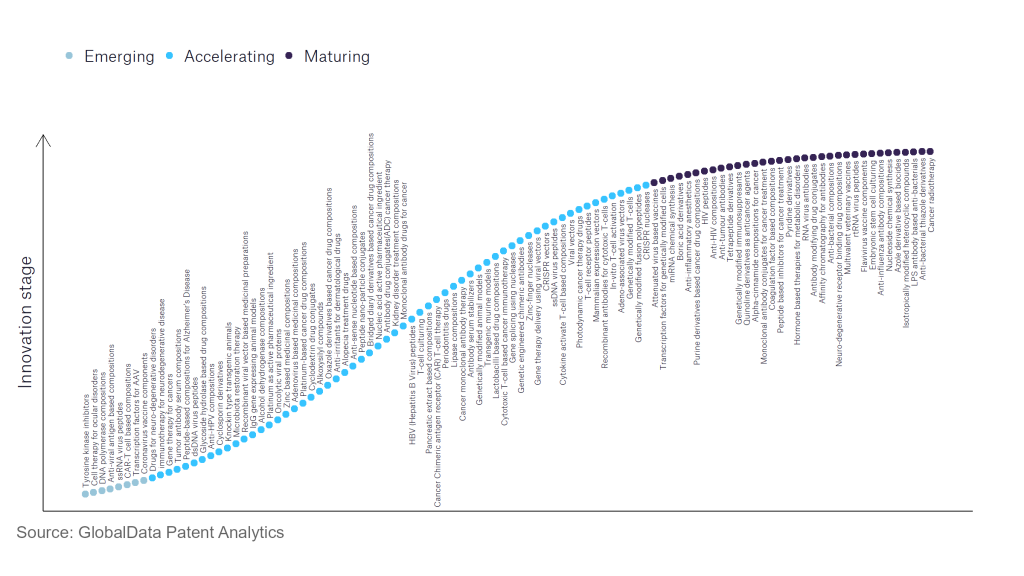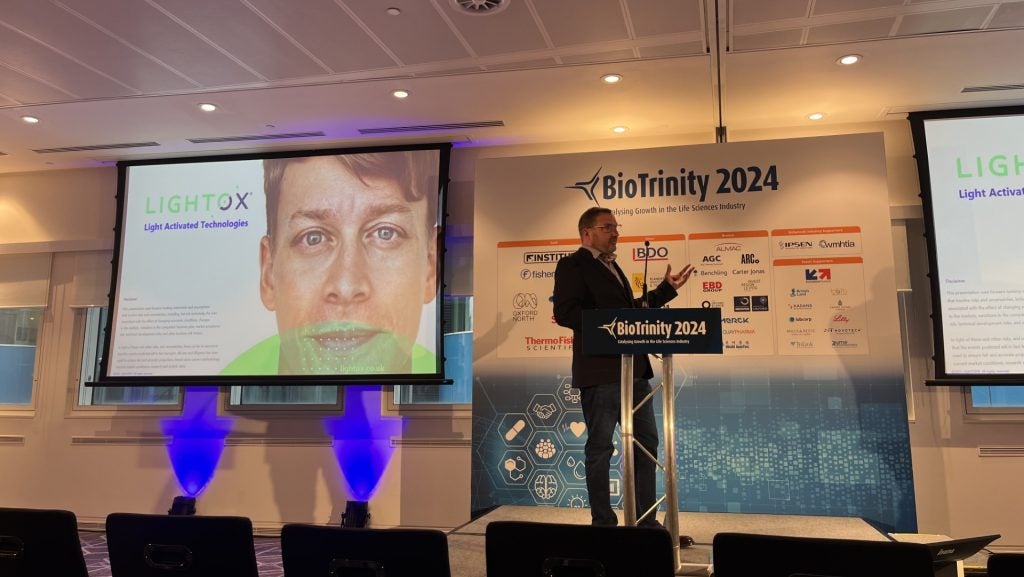The pharmaceutical industry continues to be a hotbed of innovation, with activity driven by the evolution of new treatment paradigms, and the gravity of unmet needs, as well as the growing importance of technologies such as pharmacogenomics, digital therapeutics, and artificial intelligence. In the last three years alone, there have been over 633,000 patents filed and granted in the pharmaceutical industry, according to GlobalData’s report on Innovation in Pharmaceuticals: Anti-irritants for dermatological drugs. Buy the report here.
However, not all innovations are equal and nor do they follow a constant upward trend. Instead, their evolution takes the form of an S-shaped curve that reflects their typical lifecycle from early emergence to accelerating adoption, before finally stabilising and reaching maturity.
Identifying where a particular innovation is on this journey, especially those that are in the emerging and accelerating stages, is essential for understanding their current level of adoption and the likely future trajectory and impact they will have.
See Also:
110 innovations will shape the pharmaceutical industry
According to GlobalData’s Technology Foresights, which plots the S-curve for the pharmaceutical industry using innovation intensity models built on over 756,000 patents, there are 110 innovation areas that will shape the future of the industry.
Within the emerging innovation stage, cell therapy for ocular disorders, coronavirus vaccine components, and DNA polymerase compositions are disruptive technologies that are in the early stages of application and should be tracked closely. Adeno-associated virus vectors, alcohol dehydrogenase compositions, and antibody serum stabilisers are some of the accelerating innovation areas, where adoption has been steadily increasing. Among maturing innovation areas are anti-influenza antibody compositions and anti-interleukin-1, which are now well established in the industry.
Innovation S-curve for the pharmaceutical industry

Anti-irritants for dermatological drugs is a key innovation area in pharmaceuticals
Anti-irritant agents can alleviate the unwanted effects of an irritant on the skin. The type of irritation on the skin depends on the type of irritant, its strength, contact type and the individual’s vulnerability. Anti-irritants work by interacting with the irritant present in the product, which forms a barrier and inhibits the interaction between the irritant and the skin. The agents can also boost the natural lipid skin barrier, scavenge the free radicals present on the skin, and mask the negative tightness or dryness feel. Examples include antioxidants, Vitamin E, Vitamin C, Thiol Antioxidants, and Flavonoids.
GlobalData’s analysis also uncovers the companies at the forefront of each innovation area and assesses the potential reach and impact of their patenting activity across different applications and geographies. According to GlobalData, there are 130 companies, spanning technology vendors, established pharmaceutical companies, and up-and-coming start-ups engaged in the development and application of anti-irritants for dermatological drugs.
Key players in anti-irritants for dermatological drugs – a disruptive innovation in the pharmaceutical industry
‘Application diversity’ measures the number of different applications identified for each relevant patent and broadly splits companies into either ‘niche’ or ‘diversified’ innovators.
‘Geographic reach’ refers to the number of different countries each relevant patent is registered in and reflects the breadth of geographic application intended, ranging from ‘global’ to ‘local’.
Patent volumes related to anti-irritants for dermatological drugs
Source: GlobalData Patent Analytics
AbbVie is one of the leading patent filers in developing anti-irritants for dermatological drugs. AbbVie is a specialty biopharmaceutical company that discovers, develops, manufactures, and commercialises drugs for the treatment of chronic and complex diseases. Its drugs are indicated for the treatment of metabolic diseases, rheumatological diseases, neurological disorders, viral diseases, skin diseases, complications associated with cystic fibrosis, pain related to endometriosis, diseases of the gastrointestinal tract, various types of cancer, and other serious health conditions.
In terms of application diversity, OliX Pharmaceuticalsis the top company, followed by Klox Technologiesand Bioxis Pharmaceuticals. By means of geographic reach, Revance Therapeutics holds the top position, while Endo Internationaland Pluri are in second and third positions, respectively.
To further understand the key themes and technologies disrupting the pharmaceutical industry, access GlobalData’s latest thematic research report on Pharmaceutical.
Premium Insights
From

The gold standard of business intelligence.
Blending expert knowledge with cutting-edge technology, GlobalData’s unrivalled proprietary data will enable you to decode what’s happening in your market. You can make better informed decisions and gain a future-proof advantage over your competitors.






